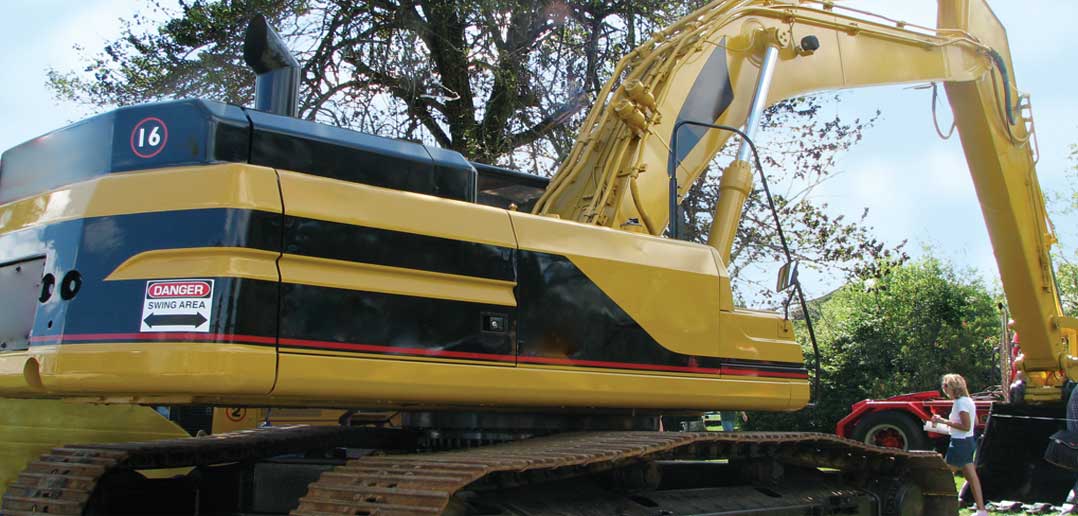The Recorder
KAGAWONG—With a harsh unrelenting winter and a slow start to a spring green-up, the chances of getting a doe tag for the 2014 hunting season will be slimmer than last year.
A deer management meeting for Manitoulin Island west (43A) and east (43B) wildlife management units (WMUs) was held at the Kagawong community complex April 30 to discuss the state of the deer population and how many tags will be distributed for the 2014 hunting season.
With an estimated 40 percent of last year’s fawn population wiped out due to weather conditions, according to Wayne Selinger, area biologist for the Ministry of Natural Resources (MNR), he will be strongly recommending a substantial decrease in doe tags for the east and West End, respectively, he told the meeting.
Mr. Selinger recommended WMU zone 43A be reduced from 400 tags to 300 tags, but 13 people of the 19 present at the meeting voted to recommend to reduce the tags to 100 for the 2014 hunting season. John Seabrook voted for zero tags.
As for WMU zone 43B, Mr. Selinger recommended a drop from 3,500 to 2,750 tags. Three people agreed with Mr. Selinger, but nine people voted to reduce it further, to 2,500 tags for the 2014 hunting season, so the recommendation will be for the latter figures to be used.
“Last year we kept it the same across the board, and I was of the mind to increase the tags this year, but the winter took more deer than hunters could and there is no way we can raise it this year,” said one person at the meeting.
The ministry uses multiple tools to gauge the population of deer on Manitoulin Island: motor vehicle collisions (MVC), the post card survey of hunting results from the year before, and check stations measuring deer condition of harvested deer.
“MVC data is showing an all-time peak in 2003 and then as a result of aggressive harvest targets we brought the herd down, then with a bad winter in 2009 a decrease was seen until a rise in 2010. It seems in 2013 we are back to the same level of deer we were dealing with in 2003,” Mr. Selinger said.
According to Mr. Selinger, the estimated 2013 harvest numbers are 413 deer in 43A and 2,910 in 43B, a total of 3,323 deer harvested from Manitoulin Island. Broken down, the 413 deer harvested from the West End amounts to approximately 85 does, 45 fawns and 280 bucks.
“The east and West End used to be almost equal for the amount of deer per square kilometres. Now almost 20 years later, 43A has declined since then, showing one deer per square kilometer,” Mr. Selinger said. “Now 43B is showing close to two deer per square kilometer.”
The destruction of woodland habitat, along with more intensive farming practices in the West End throughout the 1970s and ‘80s, was offered as a reason for the decline of the deer in the west end over the last few decades.
“We were purging files the other day and I came across a file from the 1970s, estimating the Manitoulin deer population at 4,500 animals. Even with the decline we’ve seen in the last few years, I still estimate the herd sitting around 14,000 deer on the Island,” Mr. Selinger said. “We have healthy deer conditions for healthy growth.”
Of the 14,000 deer, approximately 2,500 are on the West End.
“When we look at the severity of the winter we just had, with the exception of 2000-2001, this is the worst winter we’ve had since 1979,” said Mr. Selinger. “There were seven winters like this in the ‘70s, where it was over 800 on the snow depth index. We have to hope this winter was an anomaly and not a trend.”
“The populations were on an incline in 2003 and we pushed a little too hard in trying to bring the numbers down, that is why we have been cutting tags the last few years,” continued Mr. Selinger. “Last year we were talking about bringing the number of tags up, but the 2012 winter was moderate so we decided to wait one more year, and after the winter we had I can only recommend to lower tags this year. The prudent thing would be a tag cut and hopefully we don’t have to do it for long.”
Mr. Selinger asked that everyone who takes part in the deer hunt fill out their post card survey, as it provides important information such as harvest rates, population density and predator pressure. He said there is a likelihood of a deer check station going up for the Island this year, which provides info like age/sex structure, deer growth and condition, and to help the government make sound, informed decisions about the state of the deer population on Manitoulin Island.
“I am hoping we have a check station this year, sampling 800 to 1,000 deer and we will have hunt data for next fall, “ added Mr. Selinger.





